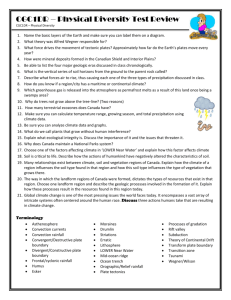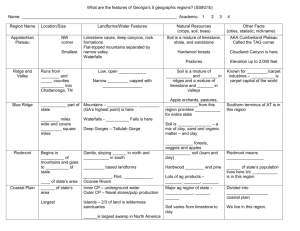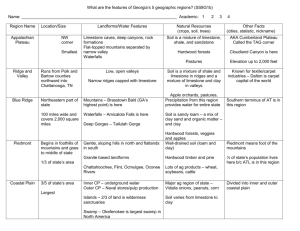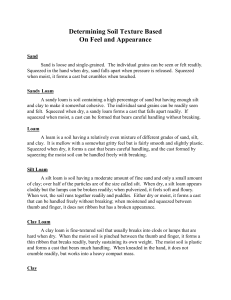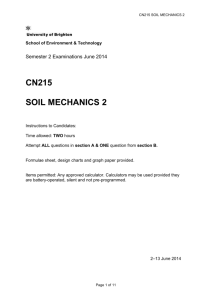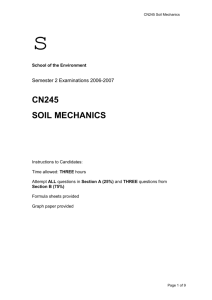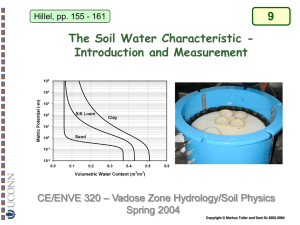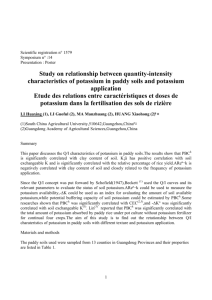Assignment3
advertisement
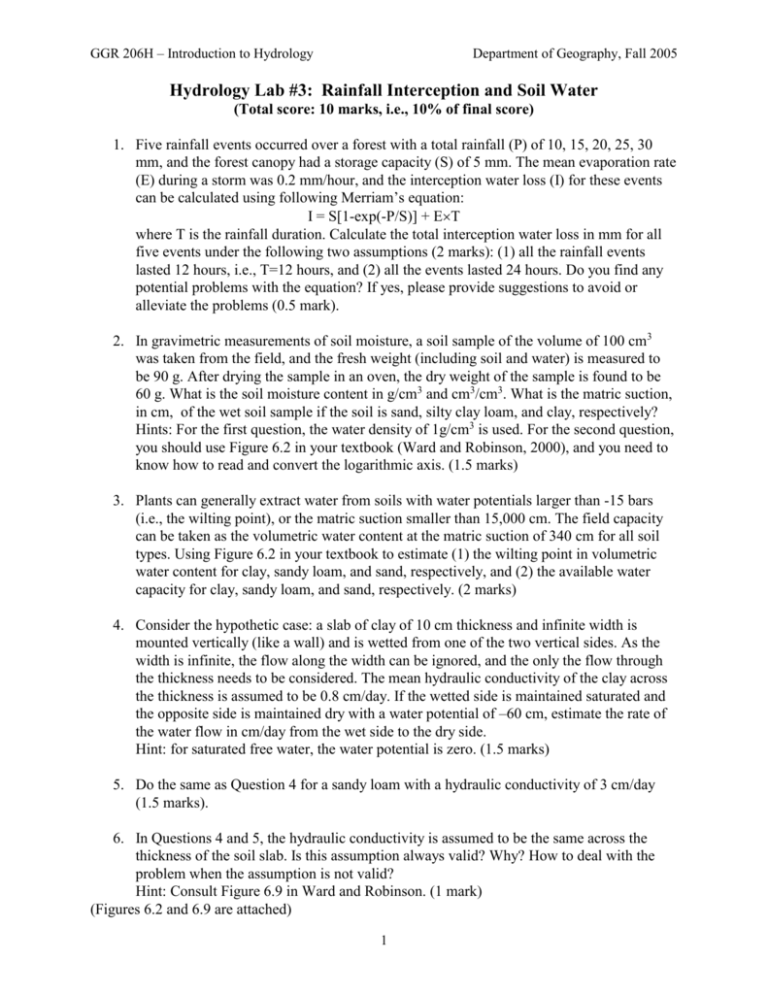
GGR 206H – Introduction to Hydrology Department of Geography, Fall 2005 Hydrology Lab #3: Rainfall Interception and Soil Water (Total score: 10 marks, i.e., 10% of final score) 1. Five rainfall events occurred over a forest with a total rainfall (P) of 10, 15, 20, 25, 30 mm, and the forest canopy had a storage capacity (S) of 5 mm. The mean evaporation rate (E) during a storm was 0.2 mm/hour, and the interception water loss (I) for these events can be calculated using following Merriam’s equation: I = S[1-exp(-P/S)] + ET where T is the rainfall duration. Calculate the total interception water loss in mm for all five events under the following two assumptions (2 marks): (1) all the rainfall events lasted 12 hours, i.e., T=12 hours, and (2) all the events lasted 24 hours. Do you find any potential problems with the equation? If yes, please provide suggestions to avoid or alleviate the problems (0.5 mark). 2. In gravimetric measurements of soil moisture, a soil sample of the volume of 100 cm3 was taken from the field, and the fresh weight (including soil and water) is measured to be 90 g. After drying the sample in an oven, the dry weight of the sample is found to be 60 g. What is the soil moisture content in g/cm3 and cm3/cm3. What is the matric suction, in cm, of the wet soil sample if the soil is sand, silty clay loam, and clay, respectively? Hints: For the first question, the water density of 1g/cm3 is used. For the second question, you should use Figure 6.2 in your textbook (Ward and Robinson, 2000), and you need to know how to read and convert the logarithmic axis. (1.5 marks) 3. Plants can generally extract water from soils with water potentials larger than -15 bars (i.e., the wilting point), or the matric suction smaller than 15,000 cm. The field capacity can be taken as the volumetric water content at the matric suction of 340 cm for all soil types. Using Figure 6.2 in your textbook to estimate (1) the wilting point in volumetric water content for clay, sandy loam, and sand, respectively, and (2) the available water capacity for clay, sandy loam, and sand, respectively. (2 marks) 4. Consider the hypothetic case: a slab of clay of 10 cm thickness and infinite width is mounted vertically (like a wall) and is wetted from one of the two vertical sides. As the width is infinite, the flow along the width can be ignored, and the only the flow through the thickness needs to be considered. The mean hydraulic conductivity of the clay across the thickness is assumed to be 0.8 cm/day. If the wetted side is maintained saturated and the opposite side is maintained dry with a water potential of –60 cm, estimate the rate of the water flow in cm/day from the wet side to the dry side. Hint: for saturated free water, the water potential is zero. (1.5 marks) 5. Do the same as Question 4 for a sandy loam with a hydraulic conductivity of 3 cm/day (1.5 marks). 6. In Questions 4 and 5, the hydraulic conductivity is assumed to be the same across the thickness of the soil slab. Is this assumption always valid? Why? How to deal with the problem when the assumption is not valid? Hint: Consult Figure 6.9 in Ward and Robinson. (1 mark) (Figures 6.2 and 6.9 are attached) 1 GGR 206H – Introduction to Hydrology Department of Geography, Fall 2005 2 GGR 206H – Introduction to Hydrology Department of Geography, Fall 2005 3


